I love wearing barefoot shoes but I also recognize that they can fall short in certain contexts and scenarios. In fact, whenever anyone asks about barefoot shoes, I always try to use my language wisely.
There are a lot of pros and cons that come along with wearing barefoot shoes, and I think it can be incredibly useful to keep some of these in mind as you wear barefoot shoes more often or start to acclimate to them.
Over the last six years, I’ve worn and reviewed countless barefoot shoes. Here are some of the biggest pros and cons to keep in mind with wearing barefoot shoes.
The pros and cons of barefoot shoes will ebb and flow based on your individual context. For example, you may have different pros and cons from this list and that’s completely normal as barefoot shoes and our interpretations of them are multifactorial.
Table of Contents+
What Are Barefoot Shoes?
Before discussing the pros and cons of barefoot shoes it’s a good idea first to define what barefoot shoes are. By defining this type of footwear, we can better understand the “why” behind the pros and cons below.
Barefoot shoes are a type of footwear designed to replicate what it’s like to be barefoot on a daily basis. Every barefoot shoe will have a few key construction features to them.
- Minimal Stack Height: Barefoot shoes will usually have super low stack heights to give you more ground feel and feedback. Stack height entails the amount of material that separates the foot from the floor.
- 0mm Heel-to-Toe Drop: Every barefoot shoe will have a 0mm heel-to-toe drop drop. This means that the forefoot and heel will be sitting level with one another.
- Flexible Sole: With low stack heights come flexible soles. This is a feature that pretty much every barefoot shoe has and it’s designed to give your foot more freedom and allow the sole to flex and articulate as if you’re barefoot.
- Wide(r) Constructions: Barefoot shoes are also typically made to be wider to let the feet move freely and let the toes splay. Width varies from company to company, but generally speaking, most barefoot shoes will be wider than traditional shoes.
Outside of these four construction features, there are other details and nuances that exist between different barefoot shoes such as materials used, how the upper hugs the foot, and this list goes on.
Barefoot Shoe Pros
While we could definitely come up with countless barefoot shoe pros, I think there are three pros and benefits that can somewhat transcend every scenario and context.
Please note as I dive into some of these pros and cons I’m going to be talking anecdotally based on my experiences and feedback that I receive from personal training clients I work with who wear barefoot shoes and from my YouTube community.
Pro 1: Great for Exposing Feet and Ankles to Different Stressors
The first pro of barefoot shoes is that they can be great for exposing your feet and ankles to different stressors. Strategic stress generally leads to growth. I typically discuss barefoot shoes as tools and relate this pro to wearing them more.
There is a lot of benefit in training your feet and ankles and barefoot shoes can be a great tool for passively doing this. Have you ever walked around barefoot a lot in a day and felt like your feet and ankles were the next day?
This soreness is due to exposing the tissues of the feet and ankles to different stressors. When you’re barefoot how you move will be different regarding the ranges of motion you’re working through and the impact of the ground will be different as you move as well.
When we think about working out we regularly implement variations and contexts that expose us to different stressors to create growth, and we should approach the feet and ankles in the same manner.
By allowing the feet to move a little more freely, we’ll be able to access ranges of motion that we may not be able to achieve with shoes with thicker and more supportive midsoles, so barefoot shoes can be great tools for slowly exposing the feet to greater degrees of stress.
The Takeaway: It’s healthy and normal to expose the feet and ankles to different stressors and barefoot shoes can help with that. There are benefits in working through different ranges of motion with different degrees of freedom.
Pro 2: Beneficial for Building Intrinsic Foot Muscles
Another benefit and arguably the biggest reason why I personally wear barefoot shoes is that they can be useful for building the intrinsic muscles of the foot (and ankle). Fun fact, there are 29 muscles that are associated with the foot and ankle.
A lot of these muscles don’t get trained a ton when we’re wearing shoes that limit our foot’s natural movement. For example, by letting the arch collapse and flex freely we’ll be better suited to train the muscles associated with the arch.
This pro and benefit piggyback off of the stressor pro above as they go hand-in-hand. If you’re exposing your feet to gradual stress, then it’s a safe bet to assume that you’ll be building the muscles of the feet and ankles to accommodate said stress.
The best part about this pro is that you don’t typically need much to get the ball rolling regarding building the muscles of your feet and ankles. If you’re new to barefoot shoes, for example, then simply wearing them for short periods on a daily wear basis will usually suffice.
If you can build more resilient feet, you’ll typically get a nice carryover to other areas of life like sports and daily life. Strength is never a weakness, and by building the feet and ankles, you’ll be further bulletproofing yourself further.
The Takeaway: Barefoot shoes can be awesome tools for strengthening the feet and ankles passively. By just wearing them on a daily wear basis you’ll typically get a benefit and you don’t necessarily need to train and wear only barefoot shoes.
Pro 3: Feel Good and Connect With Your Surroundings
Okay, the last pro is very anecdotal and personal, and to be quite honest with you, my mind has changed on this pro over time with wearing barefoot shoes more often.
In my opinion, barefoot shoes can feel awesome, especially once you let your feet live a little more freely. The width and flexibility of barefoot shoe soles can feel really good and give your feet a nice break from potentially feeling confined in shoes.
On top of feeling good once you’ve adapted to them, I do think there’s a nice “connected” feel that you get with the ground when wearing barefoot shoes. Again, a year ago, I would have said that’s a little foo-foo for me, but I’ve grown and changed my opinion here.
For example, when hiking, I love wearing barefoot shoes because of the ground feel and the ground feedback I get from them. Granted, I don’t wear super minimalist barefoot shoes for every hike as I do consider my foot and ankle tissue capacities.
In these cases, I’ll opt for models like the Merrell Trail Glove 7. This minimalist shoe has good ground feedback but doesn’t have such a low stack height that you feel absolutely everything to a huge extent.
That said, in most outdoor settings, I do enjoy how you “feel” the ground more with barefoot shoes. There’s also a cool feeling that comes with walking over rocks, logs, and other terrain and feeling it fully under the feet and not having to flinch due to pain.
The Takeaway: Once you adjust to their feel, barefoot shoes typically feel awesome and get more comfortable over time. On top of this, I think there is a subtle perk of “feeling” the ground more when wearing barefoot shoes in different settings.
Pro 4: Encourages Forefoot/Midfoot Striking
Another pro that isn’t discussed enough with proper detail about barefoot shoes is that they can encourage a change in your walking and running mechanics. Please keep in mind that with this pro, there’s nuance, and it isn’t a “one-size-fits-all” type of thing that everyone will experience.
If you want black & white info with a lack of depth, then I’d suggest visiting any major media site that discusses barefoot shoes or going on TikTok — kidding, but not really.
Generally speaking, we know two things tend to be relatively true around walking, running, and barefoot shoes.
- Forefoot/midfoot striking when running/walking is theorized to lead to better efficiency/reduced injury risk. (1) This relates to ground impact, stride rate, and other factors.
- Note heel striking/rear foot striking isn’t necessarily outright bad/risky, and research still isn’t conclusive on this topic. So please don’t read this as “heel striking is bad.” I’m a heel striker myself when doing long runs, and that feels natural for me in that running context.
- Barefoot shoes can exacerbate heel discomfort if you’re a heavy heel/rear foot striker due to the construction of their soles.
Now, what do the two above have in common? Since barefoot shoes lack a thicker heel like traditional training and running shoes, you’ll likely find that you have more impact in your heels when wearing them.
This impact can, at times, lead to some discomfort, which will result in subtly and naturally changing mechanics for some. After all, as humans, we don’t enjoy being in discomfort and tend to take the path of least resistance.
That said, if you find that you’re a heel striker and want to change that, then barefoot shoes can be a useful tool to help facilitate this ALONG with consciousness and recognition of the change you’re trying to change/promote.
The Takeaway: It’s the use of barefoot shoes in tandem with recognizing that you’re working to change mechanics that can be incredibly powerful. Don’t read this and think that just because you slap on barefoot shoes, you’ll instantly change your running and walking gait for the better — it doesn’t always work like that.
Barefoot Shoe Cons
While I like barefoot shoes and wear them a ton, I think there are a couple of cons to keep in mind with them. The idea that they’re the “only” shoe you should ever wear for every situation is lost on me, to be honest.
Con 1: They Take Time to Acclimate To
The first drawback to barefoot shoes that I think a lot of barefoot shoe newbies overlook is that they take time to adjust to. Unlike swapping one running shoe for another, barefoot shoes require more strategy for their acclimation.
For example, if you’ve never worn barefoot shoes in your life and you’re accustomed to thicker and more cushioned shoes, then you’ll want to keep in mind that your acclimation to barefoot shoes may take a while.
This acclimation period can be long and sometimes pretty, especially if you overextend what your foot and ankle tissues can tolerate. Sore feet and ankles are never a fun time and they can be limiting based on your lifestyle, to say the least.
The Takeaway: If you’re transitioning to barefoot shoes, make sure you account for an acclimation period and ease into this style of footwear. Start with low-threshold activities (walking) and build up to higher-threshold activities (hiking, lifting, jumping, etc.).
Con 2: They Can Exacerbate Certain Issues
Much like the fourth pro above, this con has a lot of nuance and individuality to it. For example, I’m keeping my language vague when I say “exacerbate certain issues” on purpose because I don’t want you to create mental associations between things in your life that may not exist — we have enough of that black & white language on social media.
What I mean when discussing this con is that if you already have discomfort with your feet, ankles, knees, or hips and then shift to barefoot shoes without a strategy, then you may run into instances where you make those discomforts feel greater.
This con is also based on my own experiences and the many conversations I’ve had with friends who love barefoot shoes or who have tried to make the switch full-time.
To give you an anecdotal story, if my quad tendons are feeling spicy and beat up from training and life, then using barefoot shoes in certain contexts can increase the discomfort I’m already feeling. This is likely due to the greater impact and ground force you experience when wearing them.
This is also why I’m a big fan and proponent of rotating my footwear and not being married to only one type of shoe. I wear what allows me to perform the best while keeping the wheels on with my training and body. I understand that you can wear barefoot shoes and not wear them full-time to achieve their benefits.
Con 3: Width Can Be Problematic for Narrow Feet
Another con that some of my community members have brought up is how some barefoot shoes can actually run a little too wide for their needs. This can leave you sliding around in your shoes and not feeling “secure” when wearing them.
While I don’t think this will be an issue for most and there are barefoot shoes that run a little more on the snug side, it is worth noting that barefoot shoes aren’t just a “one-size-fits-all” type of shoe due to anatomical differences.
If you don’t have the widest feet and you plan to use your shoes for hiking, jumping, and other activities that require more snugness to lock the feet down, then you’ll want to look into models like the Merrel Vapor Glove 6 and Xero Shoes HFS.
The Takeaway: Before you buy a particular pair of barefoot shoes, it’s a good idea to spend a little time researching the shoe’s fit and how that will translate to your foot anatomy and performance needs.
Con 4: Sole Durability Can Vary and Shoes Can Be Expensive
The final con that I have with barefoot shoes is that their durability can vary greatly, and this goes for most shoes, to be honest. However, with most barefoot shoes you’re usually working with less sole material so they can fade fast with a ton of use.
For example, if we look at models like Vivobarefoot which are shoes notorious for costing $150+, their soles can have a ton of variability depending on the model and how you’re using them.
If you spend $170 on a pair of shoes and their tread fades after a few months then that can be a pretty disheartening experience. This is why I suggest checking out multiple reviews before buying new pairs of barefoot shoes.
The barefoot shoes industry is growing fast and so are the materials and tech being used in shoes. I’m optimistic that we’ll see fewer issues with durability as companies grow and learn more, and I’m hoping costs come down as more companies come to market.
The Takeaway: Do your research before investing in new pairs of barefoot shoes. Variability can vary a ton at times from shoe to shoe so it’s a good idea to make sure your investment in a shoe matches your performance needs and wants.
Frequently Asked Questions (FAQ)
Q:Are there benefits to barefoot shoes?
Q:What are the disadvantages of barefoot shoes?
Q:Should everyone wear barefoot shoes?
Takeaway Thoughts
I love barefoot shoes and I think there can be a handful of benefits of wearing them in different contexts. The ability to let our feet move freely while exposing them to new stressors can be great for resiliency and growth.
Do I think barefoot shoes are the “end-all-be-all” regarding footwear choices? No, and I think research and strategy are useful to keep in mind when buying and wearing barefoot shoes.
If you have additional questions about barefoot shoes and their pros and cons or which model you should go with based on your needs, drop a comment below or reach out via Instagram (@jake_boly or @that_fit_friend).
References
- Davis, I. S., Chen, T. L.-W., & Wearing, S. C. (2022). Reversing the Mismatch With Forefoot Striking to Reduce Running Injuries.



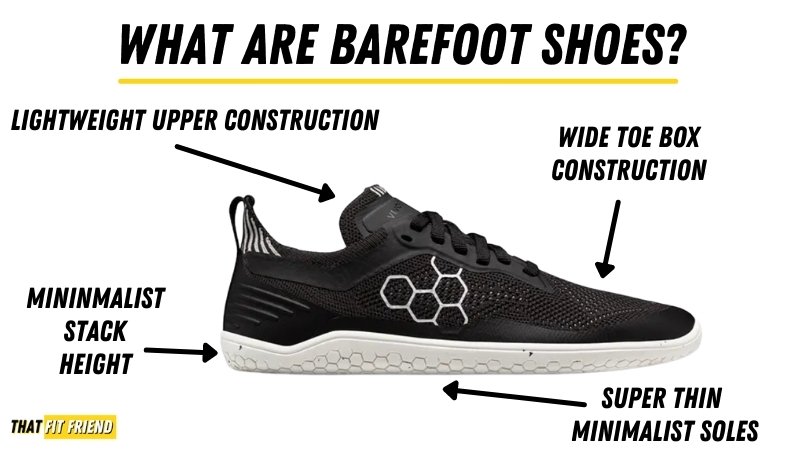


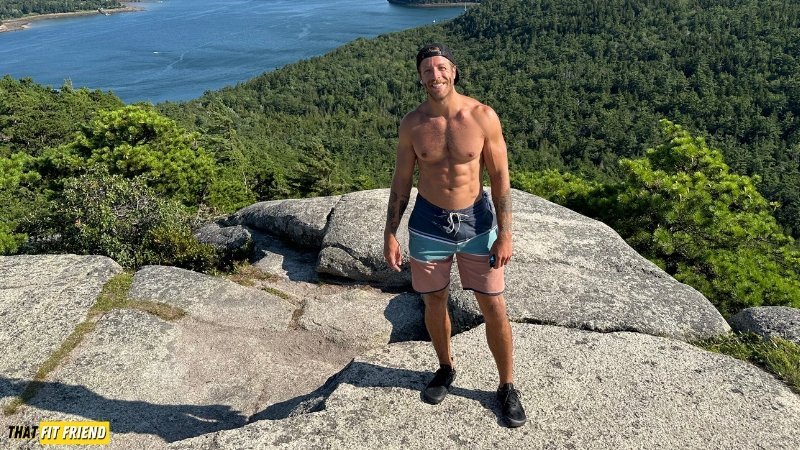

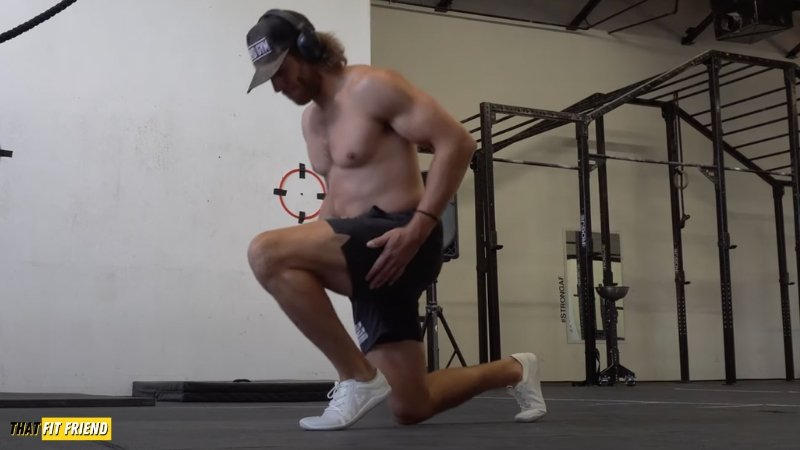




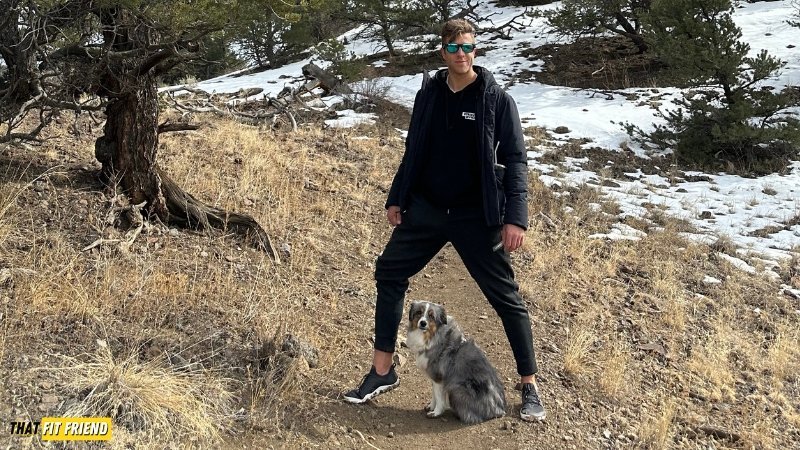





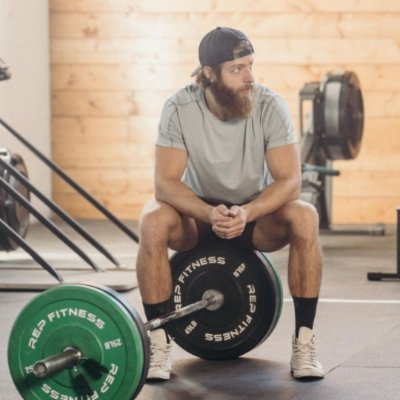


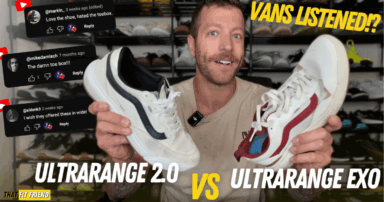
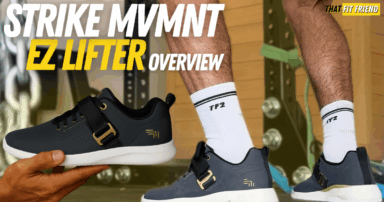
Thayer
thank you for such a thorough, and honest explanation! I really appreciate your dive into barefoot shoes, as I wade into the waters.
Thank you for checking it out 🙂
Michael Browning
Hey Jake,
I am looking for a bare foot shoe for work (big box hardware store) that does break my budget. I am on concrete 8.5 hours a day. I tried a knock off barefoot shoe 5 years ago out of curiosity. Immediately, I acclimated to them and have used them since for casual and work outs. I am 70 and in decent shape while working part time and working part time. Your input would be greatly appreciated – thanks. This article was awesome.
I’d give the WHITIN shoes a try. They’re cheap on Amazon and have a bit more stack height/foot protection!
Rachel Robertson
I’m a competitive tennis player. I feel like I don’t see many articles related to that style of exercise. I’ve always enjoyed playing with barefoot shoes, you are closer to the ground and I feel like you pay attention to your positions, bend your knees more. Tennis mates think I’m crazy but I hate those thick soles, heavy tennis shoes that are sold. I’ve been shopping around for barefoot shoes that are good for tennis. We tend to wear out the soles quicker which is concerning given how expensive these shoes can be, any recommendations? I do feel like I’m more sore afterwards but I do agree, we are constantly working new muscles with the fast movement. I’ve incorporated more stretching after exercising too. Great article!
I’d heard friends like the Xero Shoes 360 for tennis, but I’m also a bit limited on that vertical because I rarely play pickleball (don’t judge me, tennis man!) in my barefoot shoes. When I have played I’ve used the 360 with no issues and Radix, but the tread started to fade on those.
Jamie
New to cross fit and lifting, I have been an ultra runner who has been wearing only zero drop, wide toe box shoes (Altras of various iterations). I swear by these shoes because they have improved my gait and kept me out of the Chiro office after years of injury. Right now I take my shoes off if strictly lifting. Do I need the same caution if I try barefoot zero drop shoes for WOD activities and lifting? Altras have the solstice but the stack is still 23mm. I have two months of downtime time before next ultra training period to try things out.
Yeah, you’ll want to ease in. WODs and lifting demands can vary so much and with your exposure your adaptation will vary slightly. I’d feel it out and ease in and progress based on your body’s feedback as you go. Overly sore, scale back full barefoot shoe use. Feel fine? Keep going!
Jeff Mundt
Nice article and very helpful and insightful. I plan to give this style of shoe a try. I plan to order a few Atlra’s and Topo’s and use for walking a training. By the way, I live in Columbia, MO as well! It is a big world and serendipity that I happen on an article that has a comment and writer both familiar with this great town and its trail system. Cheers.
Nice! Keep in mind, Altra/Topo won’t be true barefoot shoes, but they can be a great stepping stone towards using barefoot shoes and acclimating to a zero-drop shoe. Oh snap, that’s sick! I’m currently working out of Warrenton, MO at home, and went to Mizzou for a year in college! Small world.
Helen
I will try this – I used to walk barefoot all the time. Thanks for the great information.
Ay, that’s dope!
Evan Raymond
Have worn “finger” shoes for a few years & have many of the same pro/con experiences you write. As an old person, I feel (perhaps think) I’ve better balance when walking trails or uneven surfaces; certainly with some sort of “toe” flexibility. Do barefoot shoes provide better overall balance & dull toe & foot contact? How analogous are barefoot shoes to finger shoes? Thx in advance – cheers
They can! Balance and how we interpret a shoe’s feel can be individual, though. They’re similar. You may notice that your toes don’t feel as “free” but in the context of function and whatnot — I think you’ll find them pretty similar in nature across most contexts!
Neville Mur
My concern is I wear an 8 1/2 shoe basically wide like EE or EEE &’ordering on line I’m concerned with fit as they don’t have 1/2 sizes. Should I order an 8 or 9 size shoe. Are there any retailers in Columbia, MO?
Depends on the model. Which shoe are you looking into?
For barefoot shoes, probably not. They’re still not widely carried in most retailers unless y’all have an REI there. Fun fact, I went to Mizzou for a year!
Caryopteris
My question is, where can you shop to try on a bunch of barefoot shoes?
REI has a few pairs, but other than that, they haven’t really been adapted into mass retailers yet — just a few niche stores here and there!
gyula
I have been wearing barefoot shoes for about one and a half year now. Recently my right knee started to hurt when walking. I am overweight. Could it be barefoot related ? Since the impact’s are not cushioned as much ?
I could be related to that! I’d try rotating between different types of shoes to see if that helps mitigate any discomfort or potentially opt for more cushioned shoes when you know you’ll be on your feet all day on concrete!